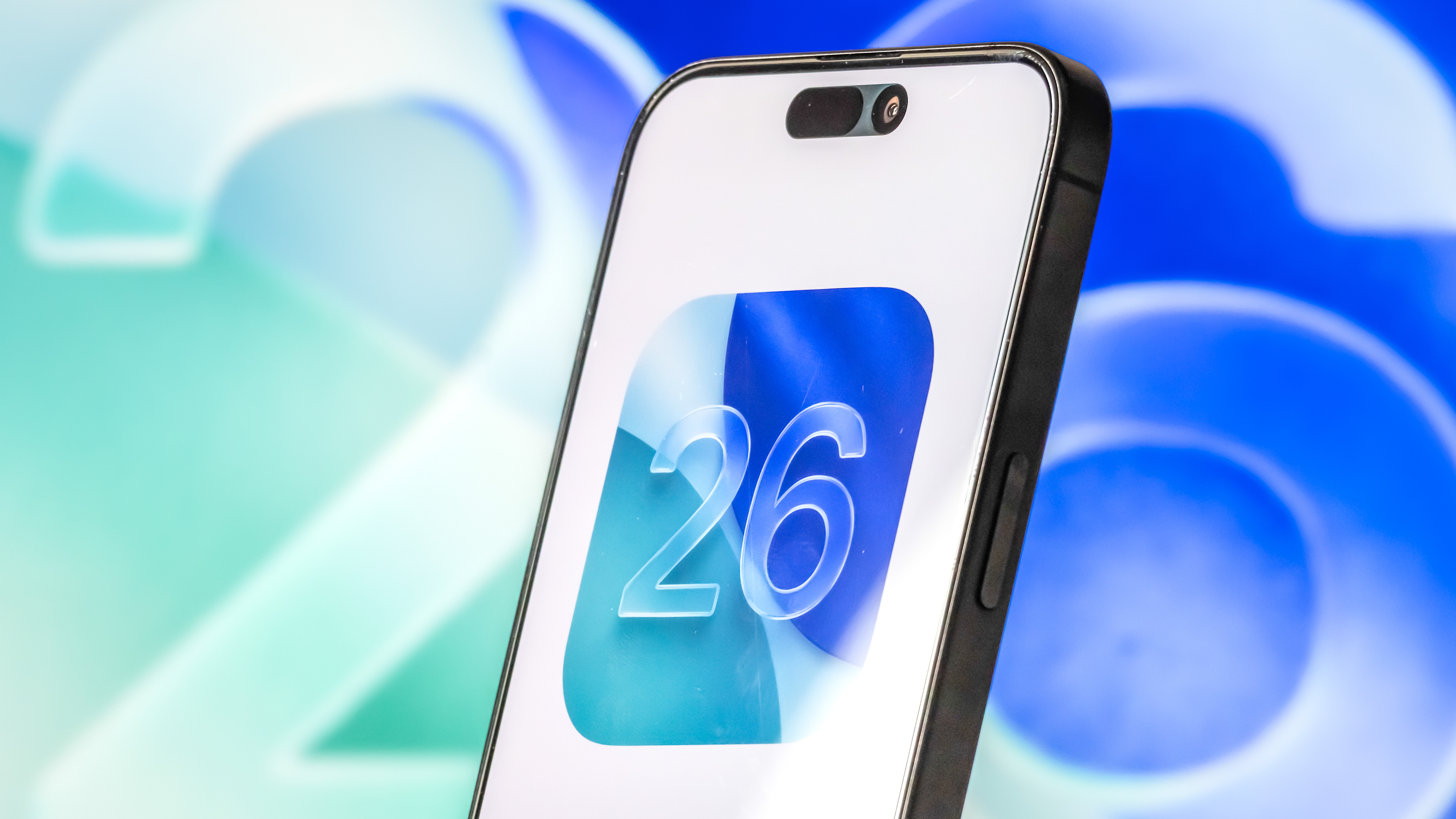Tom's Guide Verdict
The membrane-based Roccat Skeltr isn't worth $160. While the Bluetooth and mobile-integration features are unique among gaming keyboards, you can find excellent mechanical models for considerably less.
Pros
- +
Ambitious extra features
- +
Good in-game performance
Cons
- -
Too expensive
- -
Convoluted setup
- -
So-so software
- -
Disappointing lighting
Why you can trust Tom's Guide
The Roccat Skeltr ($160) is, if nothing else, appropriately named. Throwing every feature under the sun into what is ostensibly a gaming keyboard is, indeed, a helter-skelter approach to design.
One can't help but wonder how much better, and cheaper, a streamlined version of the product would have been. With unsatisfying membrane keys, features of questionable usefulness, a huge profile and a price tag that would make some mechanical keyboards blush, the Skeltr is one of the weirdest and most overdesigned keyboards I've tested.
Design
The Skeltr gets one thing absolutely right: It offers a large, comfortable, detachable wrist rest. Otherwise, the peripheral is not exactly a pretty one. At an enormous 21.0 x 9.0 x 1.8 inches, it doesn't make good use of its space, opting for showy "vents" on the sides (a keyboard does not need vents) and keys that feel surprisingly cramped.
MORE: Best Gaming Keyboards
Although the keyboard features USB and audio/mic pass-throughs, it shoves them off to the back of the device, almost as if it were ashamed of them. This is particularly strange, as they play a vital role in one of the Skeltr's unique features.
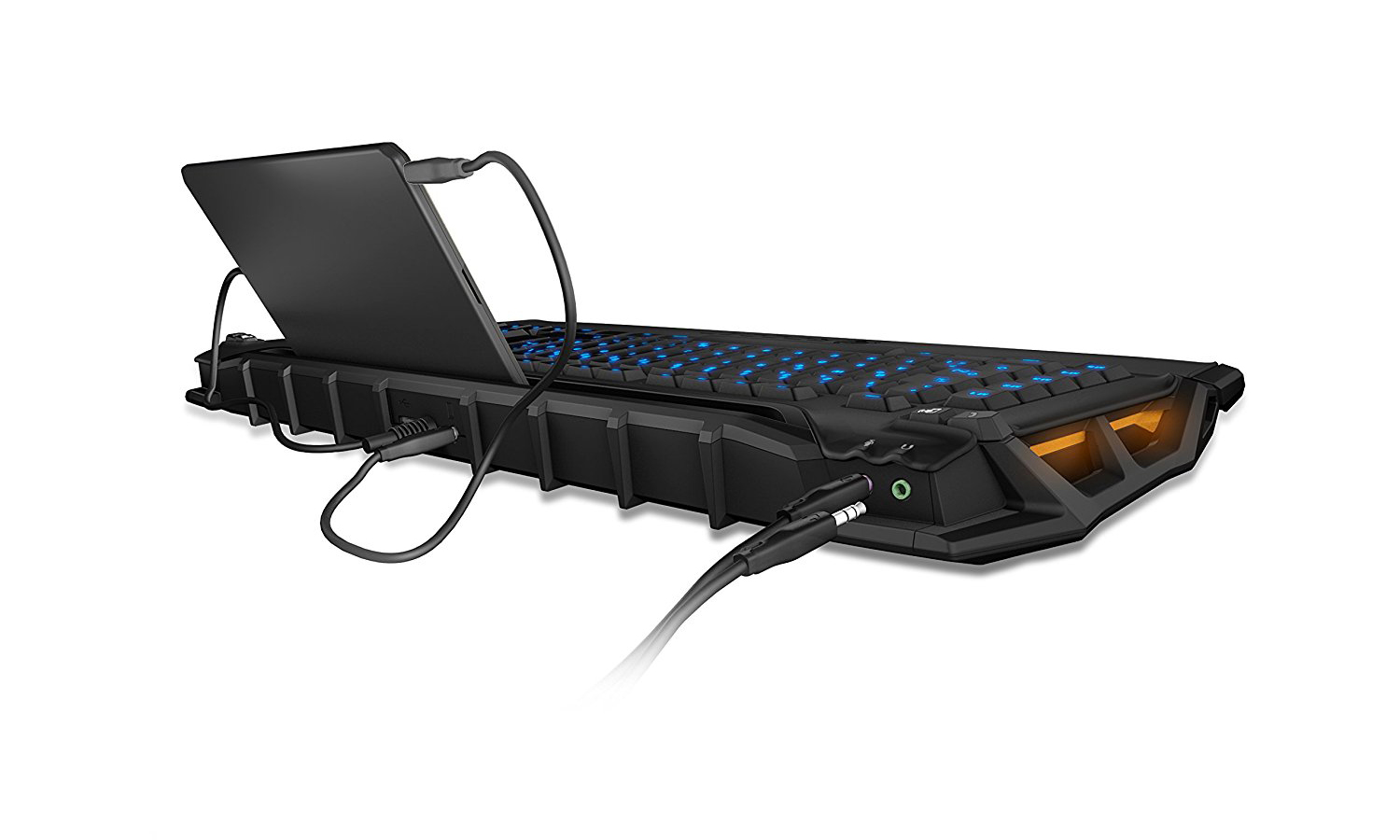
The back of the keyboard sports a large groove for a phone or tablet, complete with both a charging cable (hence the USB pass-through) as well as an audio cord that plugs into a phone's headphone jack.
This means that you can charge a phone or tablet and use it for either the Roccat Swarm app or to take calls. I'll get into the specifics later, but the plethora of cables makes everything toward the back of the machine a little cramped and messy. It's not a terribly accessible design, especially if you want to use the pass-through and audio ports for anything other than a mobile device.
Get instant access to breaking news, the hottest reviews, great deals and helpful tips.
To charge $160 for keys that are only slightly more comfortable and responsive than a $20 office keyboard is almost unthinkable.
There are also four sets of unusual buttons, which handle Bluetooth and other ancillary features (more on these in the next section). They don't really get in the way, although they do look rather ugly, especially if you'd prefer not to use them.
Keys
The Skeltr's biggest sin is in its membrane key design, which is, by definition, cheap. Membrane keys work by passing an electrical current between two metallic plates, unlike mechanical keys, which require individual switches. As such, in the $160 range, you can get some truly excellent mechanical keyboards, such as the Corsair Gaming K70 or the Logitech G610 Orion Spectrum. To charge $160 for keys that are only slightly more comfortable and responsive than those on a $20 office keyboard is almost unthinkable.
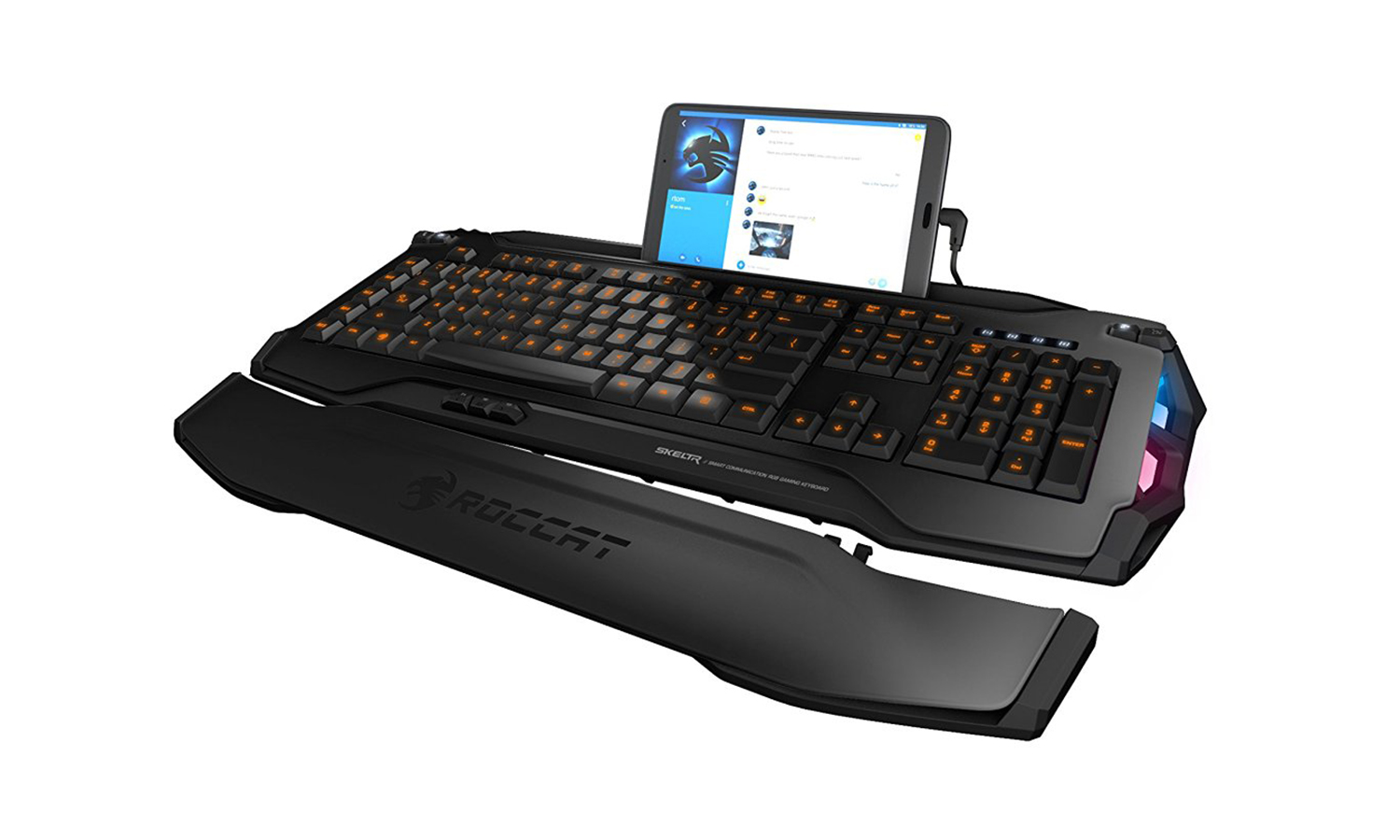
Still, in fairness, the Skeltr works as well as any other membrane keyboard on the market — and arguably a bit better. Using TypingTest.com, I scored 125 words per minute with 12 errors, whereas with a regular Lenovo laptop keyboard, I managed 105 words per minute with 15 errors. The indented key-caps helped keep my fingers comfortable, but the close spacing failed to help me avoid many common stenographical errors.
Unlike a traditional office keyboard, the Skeltr features three extra sets of keys: two for operating a phone in the upper left, two for Bluetooth connectivity in the upper right and three thumb-operated keys on the bottom. They're all pretty easy to reach and feel as satisfying as any other membrane key to click. Their functions are of questionable utility, however, as we'll discuss below.
Features
First and foremost, the Skeltr operates on Roccat's proprietary Swarm software.
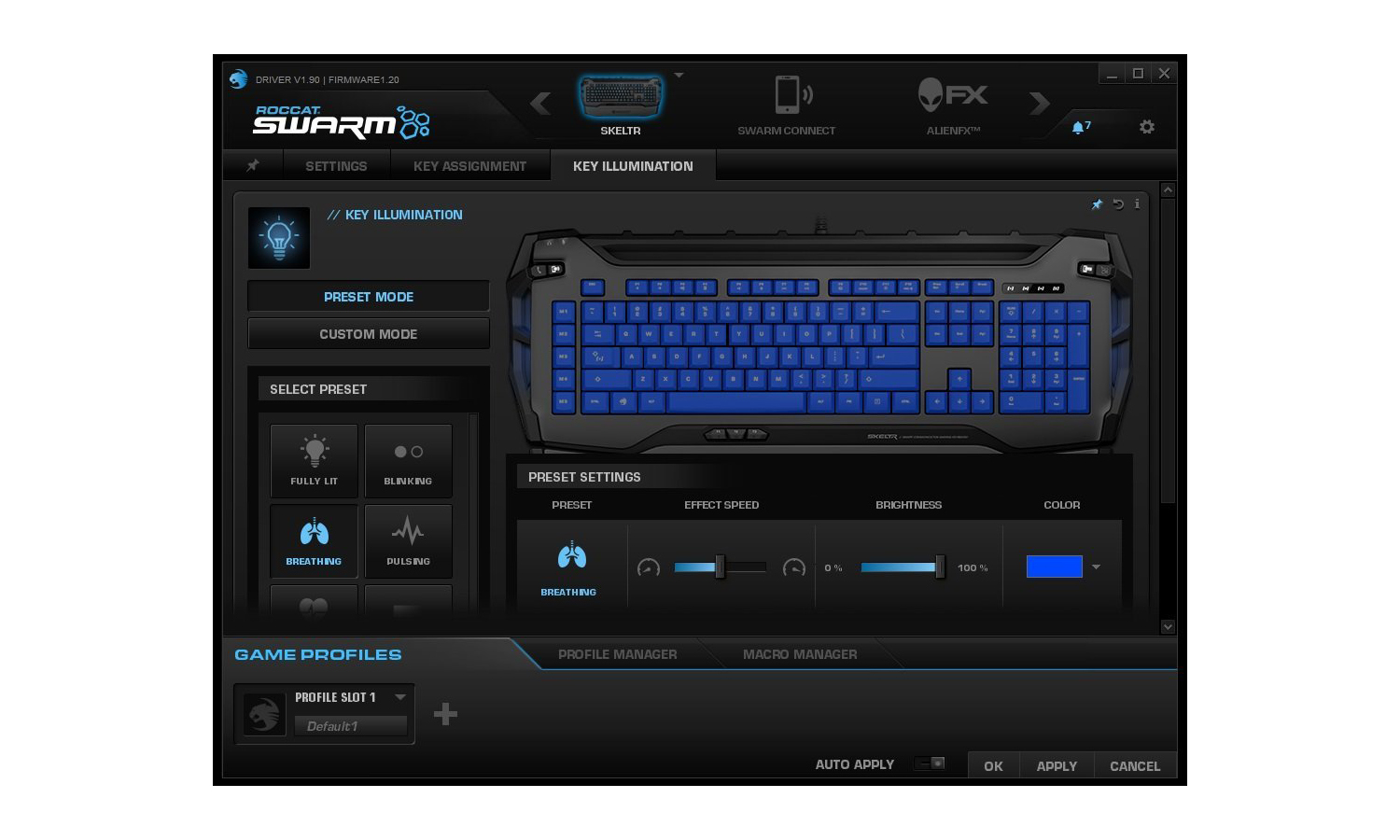
This program keeps all of Roccat's peripherals running in sync, although it's neither as clean nor as intuitive as something like the Logitech Gaming Software or the Razer Synapse 2.0. The menus are a little crowded, and altering variables is not as simple as it should be, but it generally works as advertised.
One thing to keep in mind is that while the Skeltr offers a backlit, colored keyboard, it's not a full RGB peripheral like many of its mechanical counterparts. Instead, it offers five different lighting zones. This is a good idea in theory, except that the "keys" all count as a single zone; the other four are the extraneous vents on the sides. Aside from that, there are just a few breathing effects, which are unimpressive. The color is functional, but profoundly disappointing, given what Roccat's competitors have pulled off.
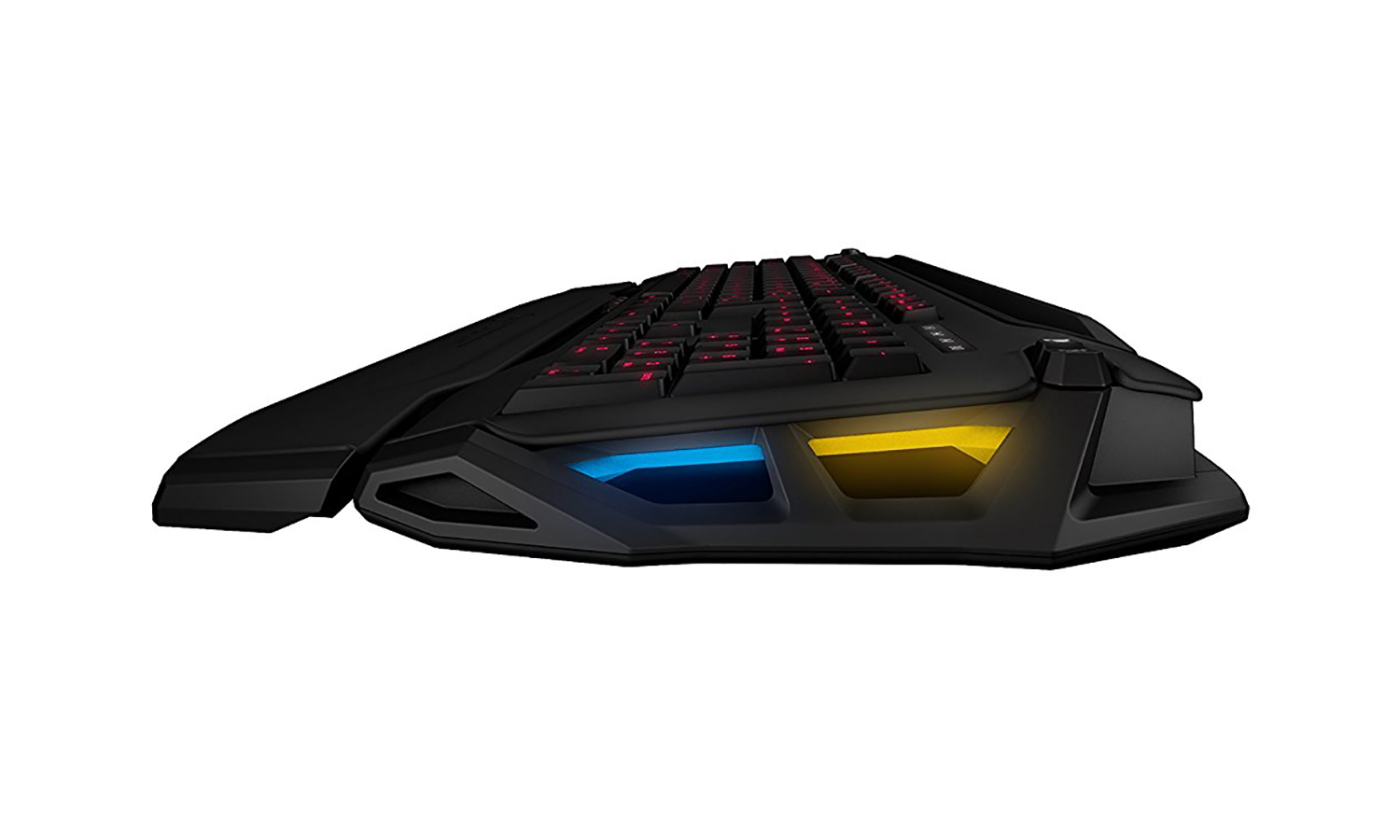
Apart from the software, you also have to deal with the extra three sets of buttons. The thumb buttons are the simplest addition: three buttons that your left thumb can access. You can program them for any command you like. The Skeltr isn't the first keyboard to implement this feature, and it's situationally useful.
The other two sets of keys try to make the Skeltr into a full multimedia keyboard. The idea is that a player will want to have his or her phone accessible at all times, but won't want to stop what he or she is doing in order to answer calls or respond to texts. The Bluetooth key, for example, switches the keyboard from the computer input to a mobile device of your choice. (You can't use the Bluetooth to connect the Skeltr to a computer, however, since the whole keyboard still requires USB power to operate.)
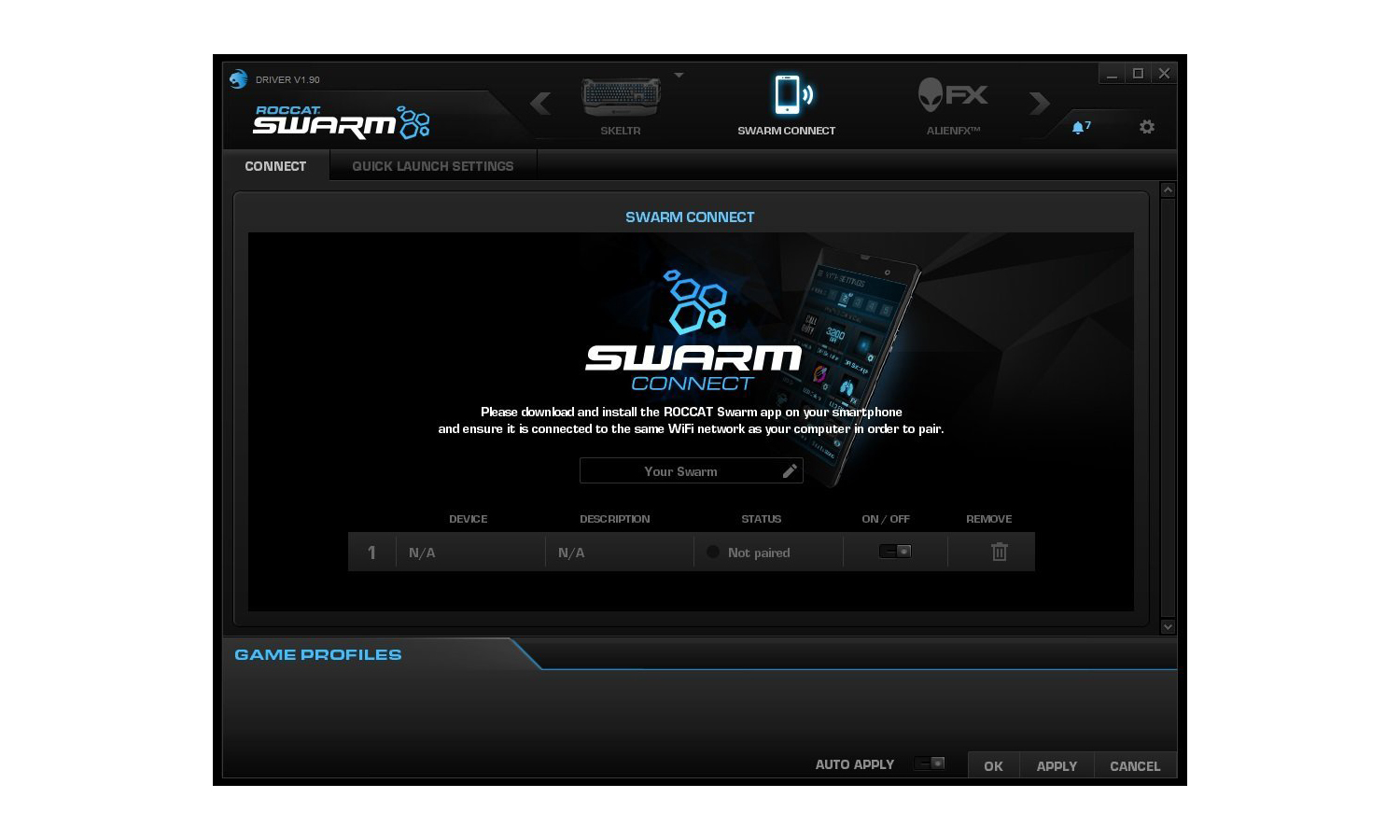
In practice, in this setting, the Skeltr works like any other Bluetooth keyboard: competent, but not really capable of navigating a cellphone all by itself. Even supposing you can tear your eyes away from Overwatch for 30 seconds to respond to a message, you'll still have to pick your hand up off the mouse to actually send your message. The Bluetooth key is not useless by any stretch, but its utility is tied to very specific situations.
MORE: Best Gaming Mice
The phone button can take calls and transfer them to your computer headphones, but only under fairly restrictive conditions. You must plug both your phone and your headset into the keyboard; if you have a wireless or USB headset, you're out of luck. Accepting calls works as advertised, but you can't actually hang up. In my experience, pressing the button without an incoming call tended to start up my phone's default music player, and blasting Boston over the soundtrack to The Witcher 3 felt incongruous, to say the least.
Performance
In games, the Skeltr performs as well as any other gaming-oriented membrane keyboard.
I was able to run and gun as Reaper in Overwatch, control a Terran army in StarCraft II, explore dim dungeons in Witcher 3 and rough up criminals as Captain America in Marvel Heroes, and the keyboard felt fine across the board. You can create different profiles and link them to different games, and you can create macros and bind them to the thumb keys, making this keyboard potentially useful for aficionados of massively multiplayer online games.
While the keys weren't quite as tactile as the real mechanical deal, I didn't notice any difference in responsiveness or timing. You can play just about anything with the Skeltr, even if the experience doesn't feel too different from playing with a decent office keyboard.
Bottom Line
The Skeltr is a creative idea, marred by a convoluted setup and an exorbitant price. Dishing out $70 or $80 for a membrane gaming keyboard is a hard pill to swallow; at $160, the prospect boggles the mind. You can get some excellent mechanical keyboards for considerably less money, such as the Razer BlackWidow Ultimate ($110) or the Logitech G610 Orion ($120), and they also offer macros, profiles and everything else you'd need from a gaming accessory.
The unfortunate part of the Skeltr is that with a lower price and a few usability tweaks, it could have been something unique — niche, admittedly, but still worth considering.

Marshall Honorof was a senior editor for Tom's Guide, overseeing the site's coverage of gaming hardware and software. He comes from a science writing background, having studied paleomammalogy, biological anthropology, and the history of science and technology. After hours, you can find him practicing taekwondo or doing deep dives on classic sci-fi.
